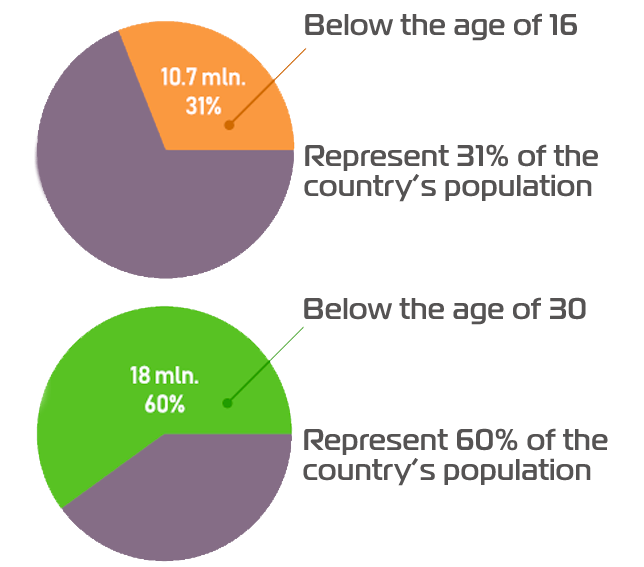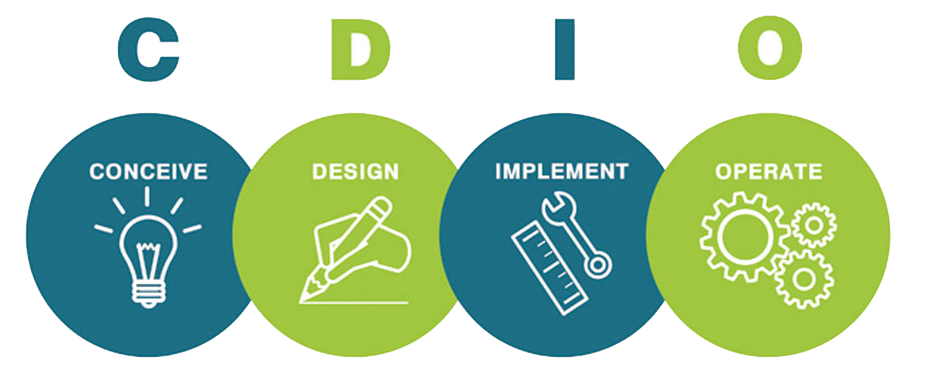ABOUT
Education is the most important development priority and a key area of the state policy of the Republic of Uzbekistan.

UZBEKISTAN IS THE COUNTRY OF YOUTH
• The number of young people under 16 is 10.7 million, which makes up 31% of the total population.
• Youth under 30 represent more than 60% of the population.
• At the same time, half of them are women.
• Uzbekistan has an almost equal ratio of men (49.7%) and women (50.3%).
• Majority of young people study in schools and higher educational institutions of the Republic.
POPULATION GROUTH WILL INCREASE BY 7.5% IN 2022

Education is a development priority and key direction
Education is the most important development priority and a key area of the state policy of the Republic of Uzbekistan.
Modernisation of domestic engineering education.
In modern conditions of world technoloical development, the future of the country, its technoloical development and the competitiveness of the economy depend on modernisation of domestic enineerin education, formation of inventive thinkin. nd more importantly, on foundation of an ealitarian community that can continually contribute to our society as a whole.

Gender imbalance in engineering and invention
• Women in the Republic take part in engineering activities.
• However, and unfortunately, their contribution in this direction is insignificant, and their efforts are not fully recognized.
• Similarly in the field of inventive creativity, women’s work is almost not represented.

Gender equality in the republic of Uzbekistan
• Women represent 32% of the national parliament, and according to this indicator, the country ranks 37th out of 190 countries.
• The proportion of women in political parties reached 44%, in higher education – 40 %, in entrepreneurship – 35 %.
• Women are widely attracted to various sectors of the economy.
• In May 2021, the Strategy for achieving gender equality in Uzbekistan until 2030 was approved.
• Also, various initiatives are being implemented to involve women in the country’s economy.
Changes in public psychology
American researchers – psychologist Amram and doctor Morgan (1980, 1984) argued that the word “inventor” should become “neutral” and cease to be associated only with a man. This requires a change in the public mind: once women can see themselves as potential inventors, they will be able to invent even more.
Professional engineering training model
• Engineering and inventive thinking should be formed from kindergarten and from school, regardless of whether one is a woman or a man.
• Currently, in technologically developed countries of the world, various programs have been developed for different levels of education, from preschool to university and further to workplace.
Ensuring continuity and succession of "School-University" education

Propaedeutics of the implementation of the World Initiative CDIO (Conceive-Design-Implement-Operate) standards at school.

Used in the world practice of pre-engineering (school) and science education, such as the US National Education Corporation Project Lead The Way (PLTW).
High technologies is a way to form engineering and inventive thinking
• High technologies provide the basis for the formation of a new type of engineering and inventive thinking, which makes it possible to train highly qualified female and male specialists for the Industry 4.0.
• Potential of such technologies to shape engineering thinking provides for necessary skills for the digital economy.
